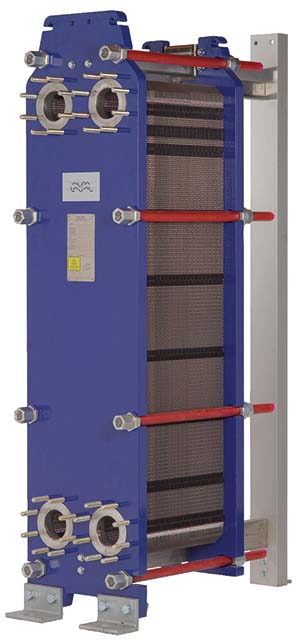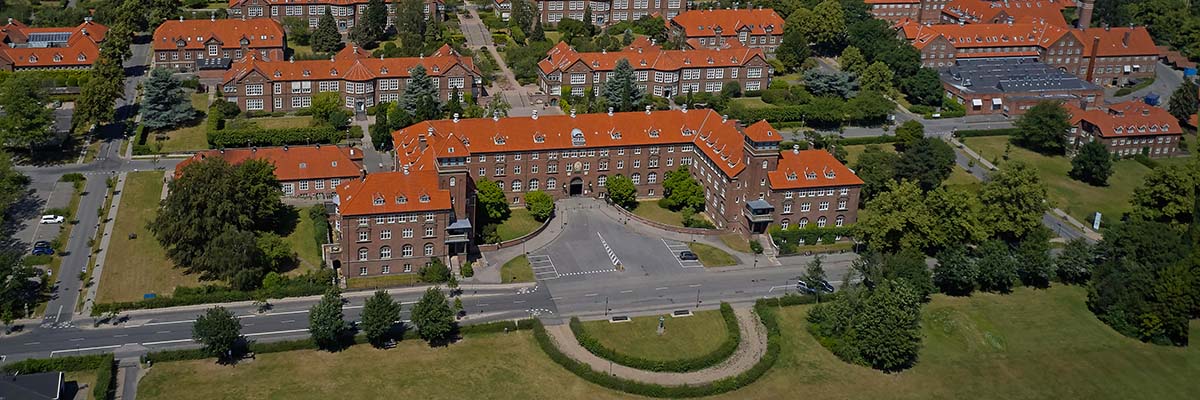Green energy from the ground
Groundwater based self-produced heating and cooling at Bispebjerg Hospital, Denmark using energy efficient gasketed plate heat exchangers from Alfa Laval, securing the ground water temperature.
DATE 2023-11-28The new hospital in Bispebjerg, Denmark uses a solution that stores heat and cold in the ground for their energy supply. It is the largest ATES facility in the country and it will reduce their CO2 emissions by 50%. With six gasketed plate heat exchangers from Alfa Laval controlling the heating and cooling of ground water, the energy savings will be as much as 75%.
An ATES facility stores cold and heat in the ground and stands for Aquifer Thermal Energy Storage. It will cover all Bispebjerg Hospital’s cooling needs in, for example, scanners and ventilation systems and more than half of the heating needs. A large modern hospital is full of equipment, and there is a great need for cooling in the summer, while in the winter there is a need for heating. With this system, they get the opportunity to cool and heat in a much more climate-friendly and sustainable way that halves CO2 emissions.
With the ATES plant, we can optimize energy in an environmentally friendly way, and this is absolutely crucial for a sustainable future.
- Lene Stevnhoved, project manager for Nyt Hospital Bispebjerg.
Cost efficient energy savings, CO2 reduction and maintained groundwater
The greatest need for warming is on the coldest winter day, and the greatest need for cooling is on the hottest summer day, which gives a time lag of several months. Most of the heat that is removed when cooling, can therefore not be used immediately for heating purposes. When using large thermal reservoirs in the groundwater-bearing soil layers underground, it is possible to store most of the heat removed by cooling in summer, for heating in winter. The loss during storage is typically 15-20%.
When the cold is extracted, the water temperature rises. It is then further heated using a heat pump, and then led back into the ground via six hot bores. Here it is stored underground until winter comes. In the cold months it is pumped up again, and now it is the heat from the water that is extracted and used in, for example, the radiators.
Also, that water is pumped back into the ground, via the cold boreholes, and so the hospital continues to alternately reuse the heat and cold from the groundwater. The plant can circulate up to 360,000 liters of water per hour, and the alternative energy source allows the hospital to cut CO2 emissions by about 50 percent.
“The facility will be able to cover the entire future hospital cooling demand and a significant part of the heat demand. The energy savings are overall intended for approx. 75% compared to district heating and traditional cooling with decentralized refrigeration compressor system, which was the hospital’s previous way of cooling and heating. The great energy savings result from seasonal storage heat from cooling the hospital in the summer and reusing the heat in the winter with heat pumps. This also provides an attractive short payback period for the capital investment and a good economy” says Stig Niemi Sørensen, civil engineer at Enopsol, market-leading supplier of energy systems with groundwater cooling and ATES.
As the plant exclusively uses electricity and district heating, the cooling and heat production will be fossil-free in line with society’s conversion to fossil-free electricity and heat production.
ATES system
The illustration of the ATES system is describing the principal only and is not referring exactly to the specific system of Bispebjerg.
ATES-solution
- Up to 85% of deposited heat can be stored for winter, similarly with the cold for the summer
- Savings of up to 75% in total energy consumption
- No net consumption of groundwater
- 100% electricity-based
- Thermal balancing of the groundwater reservoir
- Large CO2 savings
- Can also be established in OSD areas (areas of special drinking water interests)
- No external noise
Optimized, energy efficient products with outstanding service
Via the contractor Enopsol, Alfa Laval provided six TL10-BFG plate heat exchangers for the use of transferring hot and cold stored groundwater to the internal water system. During the heat exchange, the groundwater is cooled down or heated depending on need and season. The heat pumps supply coolwing water or heat for district heating. The heat exchangers use relatively tall plates making this model suitable for duties with long temperature programs and when high heat recovery is anticipated. They have a high energy efficiency with low operating cost and flexible configuration, all important aspects in this project.
When it comes to plate heat exchangers, we have used Alfa Laval solely for all our projects during more than 25 years. The main reasons are the high-quality products with an optimum plate surface against iron precipitation from groundwater and the excellent service, support and handling Alfa Laval provides.
- Stig Niemi Sørensen, Enopsol.

Benefits TL10
High energy efficiency
Low operating cost
Flexible configuration
Heat transfer area can be modified
Easy to install
Compact design
High serviceability
Easy to open for inspection and cleaning and easy to clean by CIP
Service network
Access to Alfa Laval’s global service network
Sustainability
Energy savings
75% energy saved
Emission savings
1 120 tonnes CO2 savings / year
Cost savings
400 000 € / year
Water savings
No net consumption of ground water

